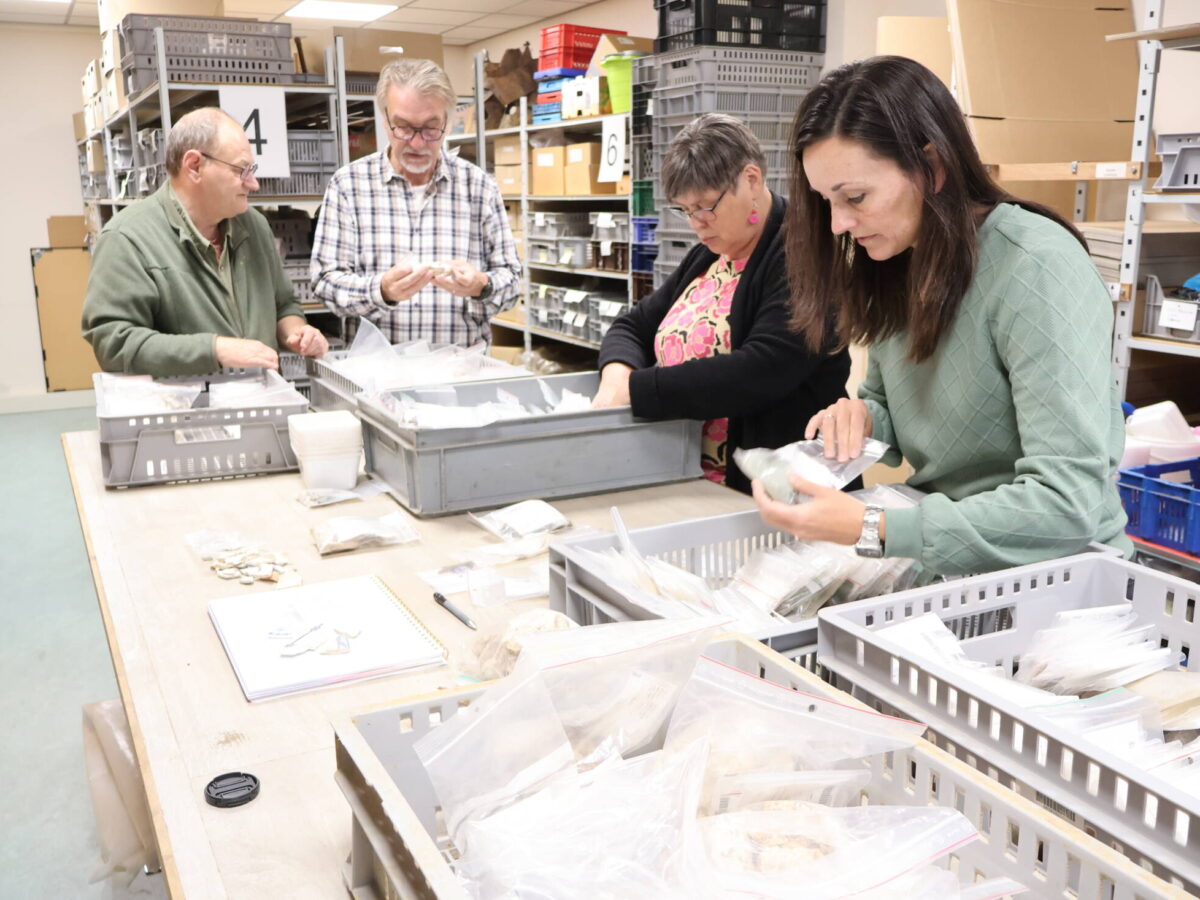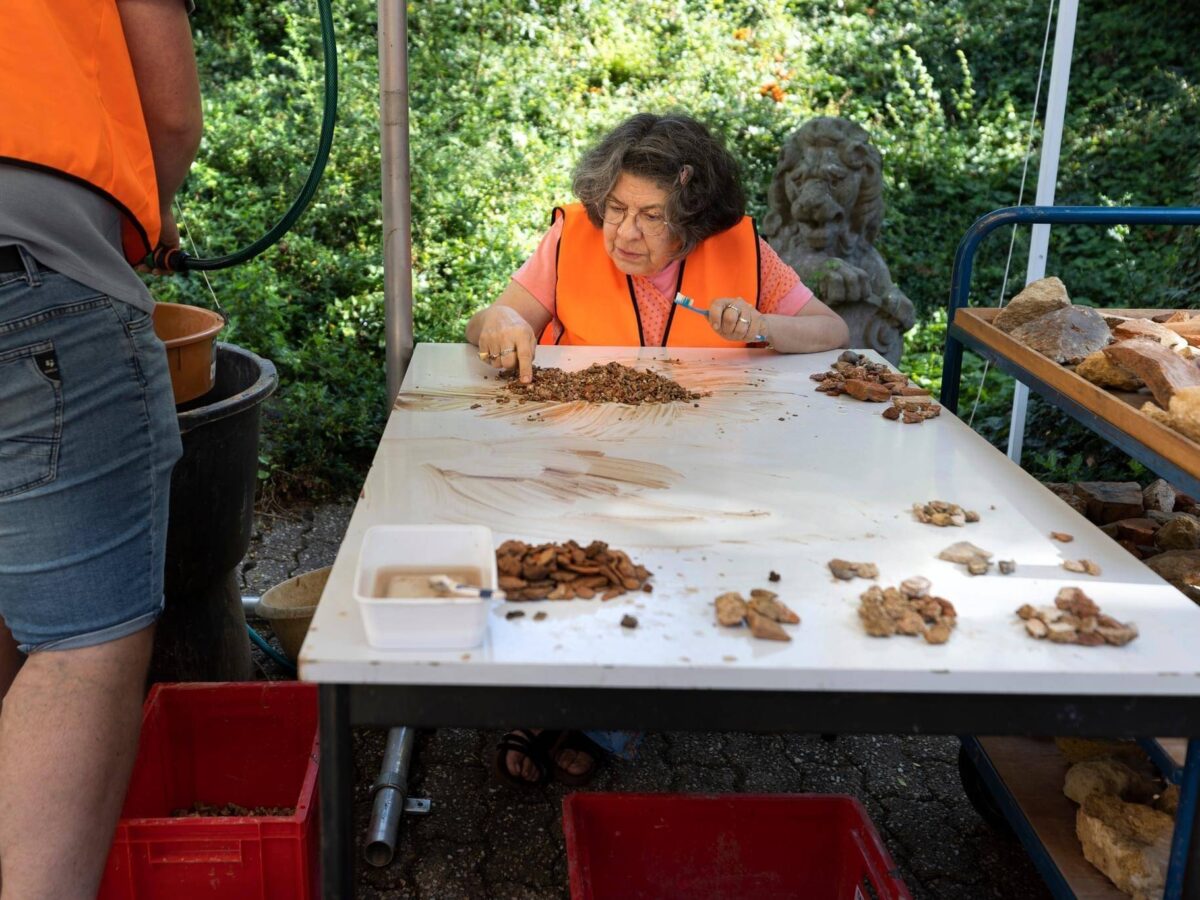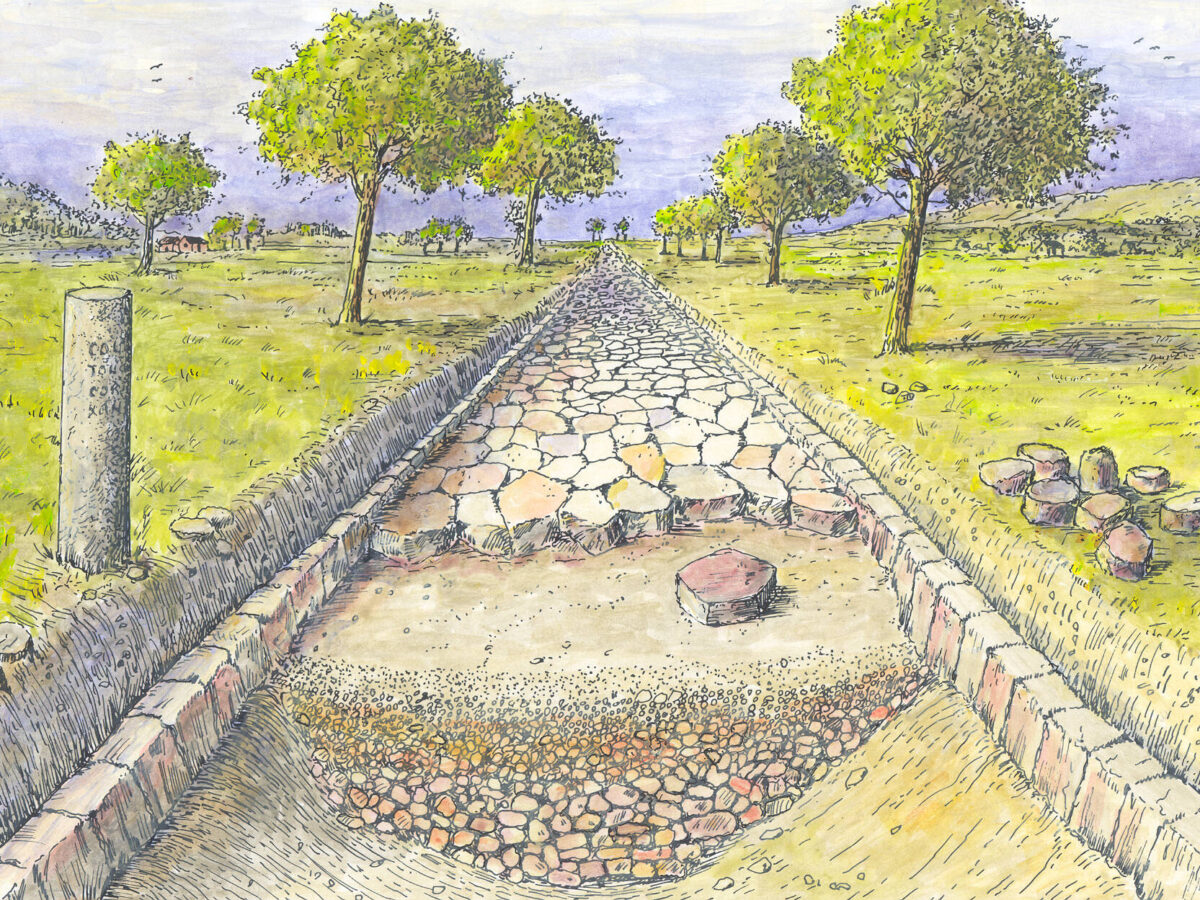Heerlen Residents Create Exhibition about “Heel Heerlen Graaft”
Author: Harry Lindelauf
Photography: Anja Neskens

From Heerlen native to amateur archaeologist to exhibition curator — thanks to their participation in Heel Heerlen Graaft (“All of Heerlen Digs”), Claudia de Rooij, Lisette Geurts, Will Schölgens, and Jos Franssen have made a remarkably swift “career” in local history.
On Thursday, 14 December at 7:00 p.m., the exhibition they designed about the archaeological project Heel Heerlen Graaft opens at De Vondst, located on Raadhuisplein in Heerlen.
On 9 and 10 September, the four were part of the team of 150 volunteers who searched for traces of Roman Heerlen in private gardens and public squares in the city centre.
All the excavated material was later washed and sorted by volunteers.
Professional archaeologists are now studying the 8,551 finds from various periods — asking the key questions: What is it? How old is it? Who used it, and for what purpose?

An Exhibition with a Double Focus
That research is still underway, which means the Heel Heerlen Graaft exhibition at De Vondst can only display a limited number of finds.
The exhibition makers therefore opted for a double focus: as a tribute, they show the amateur archaeologists at work through photos and videos, and they also present a number of well-documented finds from Heerlen’s long history.
Because most of the finds consist of small fragments, a complete example has been selected from the provincial archaeological depot for each type, allowing visitors to see what the fragment originally looked like.
A nice detail: through these finds, visitors are invited to continue the search and explore the origins of the objects themselves.
Creative Freedom
The four exhibition builders look back on the project with great enthusiasm. Will Schölgens: “We hadn’t expected beforehand that our input would be so significant.
We went through the entire process — from excavation to workshops, to brainstorming first ideas, dividing tasks, shaping the concept, and deciding what we wanted and were able to show. We had guidance, but also a great deal of freedom. For us, it was a special experience to take part in the whole process of creating an exhibition with our own contribution.”
After the official opening on 14 December, the exhibition can be visited free of charge from Tuesday to Saturday, 10:00–17:00, and on Sundays from 12:00–17:00.
“We hadn’t expected beforehand that our input would be so significant.”— Will Schölgens

